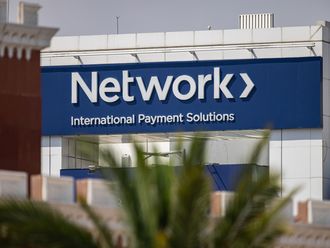
Dubai: Outlook for global sukuk issuance appears uncertain in 2018 after strong performance in 2017, according to rating agency Standard & Poor’s.
Sukuk issuance in 2017 increased by 45.3 per cent, reaching $97.9 billion (Dh359.58 billion), up from $67.4 billion in 2016, underpinned primarily by the jumbo issuances of some GCC countries and supported by strong liquidity conditions in the GCC and initiatives by some countries to develop Islamic financial services industry.
“While we still foresee significant financing needs for core Islamic finance countries, tighter global liquidity conditions, mounting geopolitical risks, and slow progress on the standardisation of Islamic finance products will continue to hold the market back from its full potential,” said S&P’s credit analyst Mohammad Damak.
- Mohammad Damak | S&P credit analyst
Jumbo local and foreign currency issuance by some GCC sovereigns drove the sukuk market higher in 2017. The $9 billion sukuk issued by Saudi Arabia was the largest issued globally to date. The market also continued to attract some Islamic finance noncore countries, with Hong Kong tapping the market for the third time and the first issuance of a sukuk in Nigeria.
“We expect this trend to continue as Morocco and Tunisia plan to tap the market in 2018 and the UK announced its intention to go to the market again in 2019 upon the maturity of the sukuk it issued in 2014. While we believe the financing needs of some Islamic finance core countries will remain high, we expect that total issuance will likely decline to $70 billion-$80 billion in 2018,” said Damak.
Global liquidity is likely to tighten this year in contrast to easy liquidity conditions in 2017. While the federal funds’ rates are expected to increase by 75 basis points (three hikes), central banks in the GCC countries are likely to mirror US rate increases due to the peg of their currencies with the US dollar.
In the same vein, the European Central Bank (ECB) has announced it will start reducing the pace of its asset purchases from January 2018, to €30 billion (Dh133.47 billion) a month, down from €60 billion. It will likely end its programme only in 2019 and start to raise rates by then.
“Overall, we think that the cost of funding for issuers will rise and that liquidity from developed markets channelled to the sukuk market will reduce or become more expensive. Liquidity conditions in GCC countries improved last year. The increase in oil prices, which we now expect to remain at about $55 per barrel, helped. At the same time, muted economic growth and declining lending activity shifted banks’ focus from lending to capital market activities where they sought higher yields than for cash and money market instruments,” he said.
With a number of regional sovereigns front-loading their issuance last year in anticipation of higher rates, analysts expect sovereign sukuk issuance to be lower this year. The recent resurgence in geopolitical risk in the region is likely to adversely impact investor sentiment.
Investors based in Europe and the US accounted for about 28 per cent of sukuk primary investors in leading issues from the region.
Events such as the diplomatic and political rift between Qatar and its neighbours, political changes in Saudi Arabia and the continued animosity between Iran and the GCC countries are not helping the investment climate.
The standardisation agenda is progressing slowly.
“Standard-setting bodies have expended a significant amount of energy in advancing the standardisation agenda, but we are not there yet.”
While standard setting bodies such as the Accounting and Auditing Organisation for the Islamic Financial Institutions (AAOIFI) and the Islamic Financial Service Board (IFSB) issued several new standards in 2017 aimed ultimately at smoothing the process of sukuk issuance, some market participants still think that standardisation is unrealistic and that the market should rather aim for harmonisation.
“We are of the view that standardisation for cross-broader sukuk issuance is not only achievable, but will boost issuance volumes, and restore the attractiveness of the instrument to issuers through a smoother and faster issuance process.”










